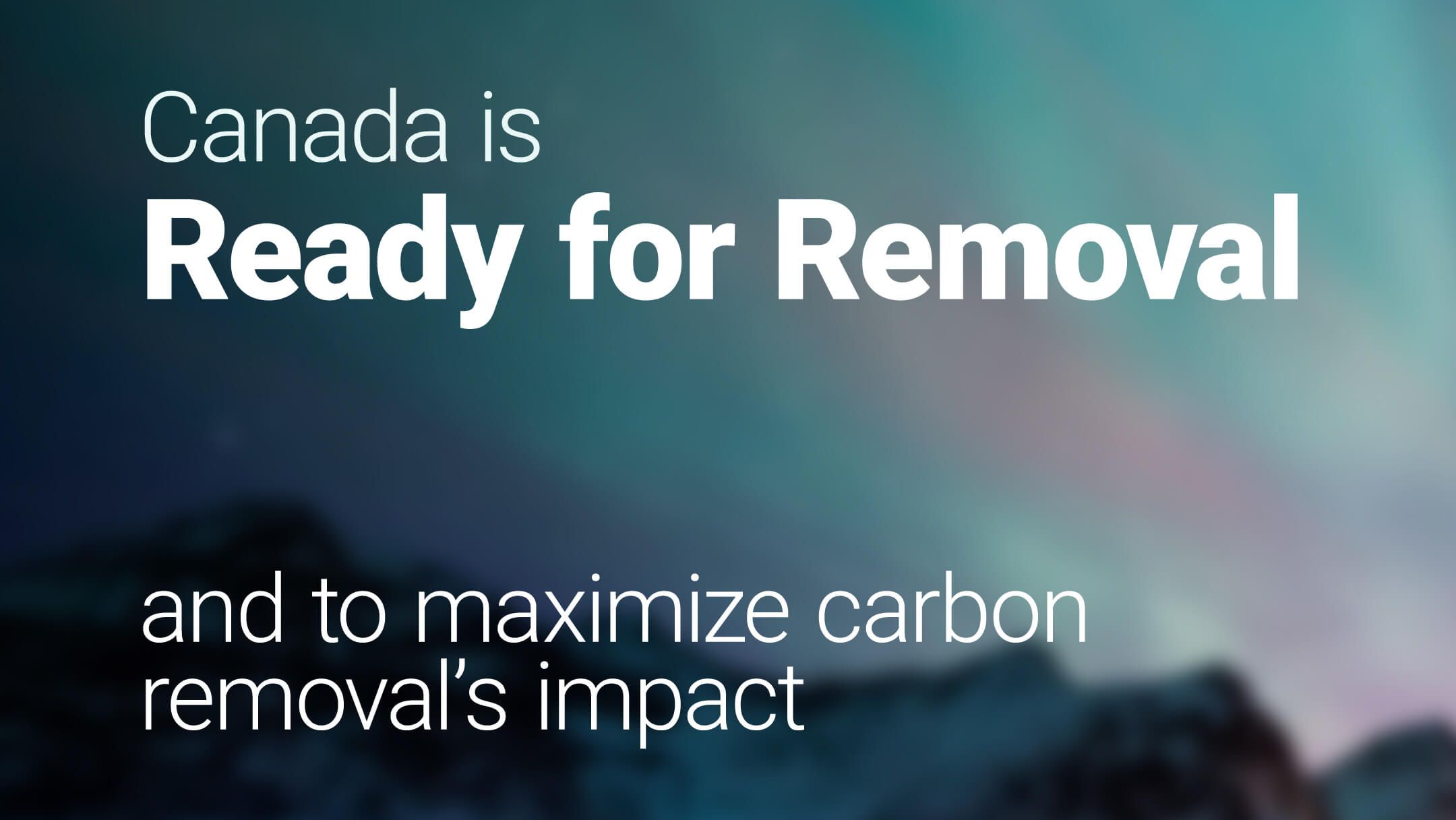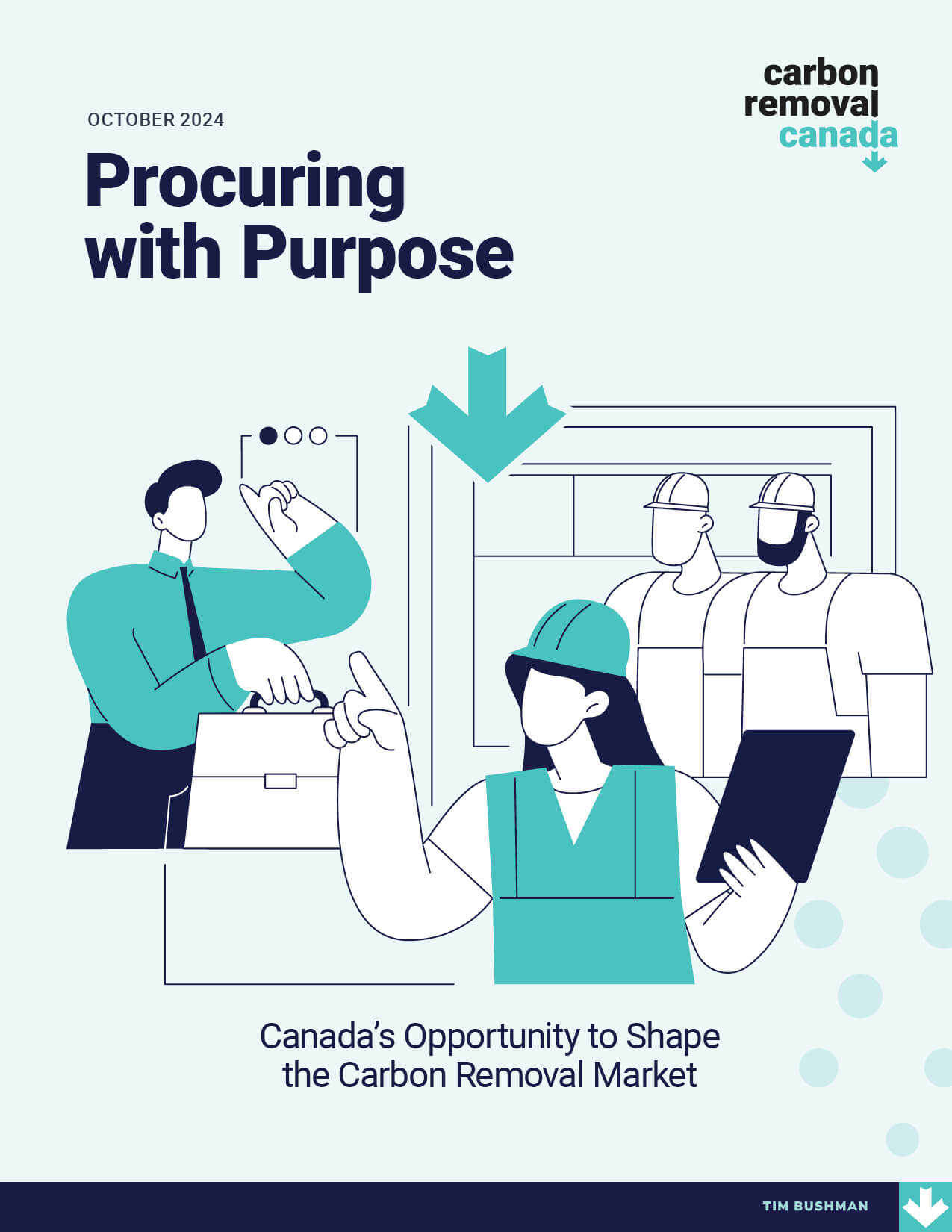As Carbon Removal Canada’s Ready for Removal blog series has already laid out, Canada is well-positioned to be a global leader in the carbon removal industry. In short, Canada has the geography, natural resources, and people for carbon removal to succeed at scale. However, success is not guaranteed — and leadership is a choice. This final installment of the Ready for Removal blog series will focus on what Canada needs to do next to build on its foundation of supportive policies and regulations and maximize the impact potential of the carbon removal industry.
Stimulating market demand
First, Canada must stimulate market demand for carbon removal services. This should be approached through the creation of a portfolio of actions that increase demand for carbon removal, most notably by leveraging the initial CAD$10M that the Government of Canada recently announced it will spend on purchasing carbon removal through the Low-carbon Fuel Procurement Program (LCFPP). Mobilising follow-on funding from the private sector and other public sector entities will be crucial to realising outsized benefits through the LCFPP because neither the public nor private sector can scale the carbon removal industry alone.
Beyond procurement, it will be important to include carbon removal in existing Canadian carbon pollution pricing systems. Technology costs are expected to decrease over time which will make carbon removal methods a more economically competitive compliance option, and protocols will be developed to allow for formal market integration. Canada should also explore other potential demand drivers, such as:
- creating a Canada-focused advance market commitment,
- allowing carbon removal to help meet a portion of regulatory requirements in programs such as the federal Clean Fuel Regulations or Clean Electricity Regulations,
- and pursuing novel regulatory schemes, including incentives for carbon removal project development within various economic sectors like mining or agriculture.
Accelerating technology supply and advancement
Second, Canada must strengthen its incentive structure for supply-side project development. Although the recently finalised carbon capture, utilisation, and storage investment tax credit (ITC) provide financial support for bioenergy with carbon capture and storage and direct air capture projects, there is still a sizable incentive gap relative to the U.S. 45Q production tax credit (PTC).
Expanding the value of the ITC or developing a complementary PTC could help ameliorate this disadvantage. Regardless, revisions to the existing ITC and any potential new incentive structure should be technology-neutral in nature to support continued innovation across the carbon removal industry and not prematurely pick winners and losers. Other potential government incentives to support project development could include non-dilutive grants, loans, and exploring options to pool resources and share risks by creating carbon removal hubs — such as the U.S. Department of Energy Regional Direct Air Capture Hubs program.
Enabling responsible carbon removal deployment
Third, Canada must commit to establishing requirements for responsible carbon removal deployment. Proper industry standards, project-specific protocols, and measurement, monitoring, reporting, and verification (MMRV) requirements are foundational to the integrity of the carbon removal industry. Quality needs to be promoted before scale. While standards can establish an overarching governance framework to help define project quality, project-specific protocols are also necessary to respect the nuances of different carbon removal methods.
The federal government should allow for the adoption of compliance-ready protocols from work that is already underway in the carbon markets. Such efforts should promote the interoperability of standards and protocols with other political jurisdictions, including the ongoing efforts of the European Union.
Additionally, this must include guidance on providing equitable partnership opportunities for First Nations and Indigenous communities and developing frameworks for robust community engagement. A supportive and streamlined permitting process for all carbon removal methods, including regulatory clarity around research versus commercial project development activities, would also help.
Canada is Ready for Removal
Canada is off to a good start on the global stage when it comes to carbon removal industry development. However, there are still actionable steps to take to close the ambition gap with other countries and solidify Canada’s leadership role. By focusing on demand creation, supply development, and market integrity in tandem, Canada can usher in an exciting new economic opportunity while positioning itself to achieve its commitment to net-zero emissions by 2050. The time to act is now.







